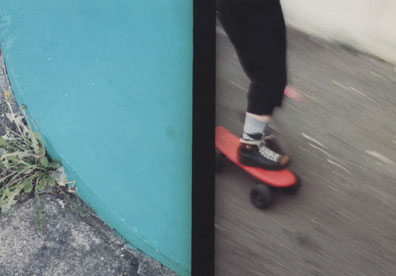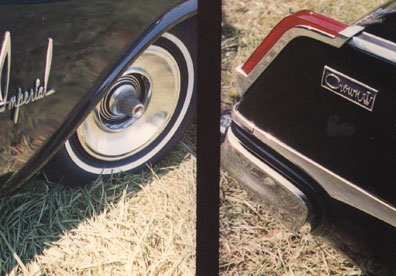Biography
...continued from page one
While I have continued to do roughly one solo show a year, around 2001 I started organizing groups shows. I curated and organized the Four Hour Art Sale and Self Serve Auction—where artists hung their work, after which a silent auction was held. After four hours, the artists collected the money for their art, and the buyers took the works home. By this point, I had invested in a large letterpress, and I was able to make promotional posters to go alongside the shows. These events were conceived to support artists and to make art more accessible to the people, two factors I've always found important.
In 2001 I organized the launch party for a set of postcards of my work that I had designed and manufactured, Box of Ice Boxes. For the opening, I printed my photographs in 11X14 format and displayed them on the side of a building that faced an alley and hosted my first drive-through art show.
In 2002 I was selected as Artist in Residence at Harper's Ferry National Park.
In 2002/03, I quit my job at Dischord Records and moved south to be an outreach student at Auburn University's Rural Studio in Newbern, Alabama. There, I photographed a world filled with drastic contrasts: poverty and excess, desperation and love, and the lush, raped, rugged landscape that is the backdrop for many Alabaman lives. With the help of grants from the Alabama State Council on the Arts and the National Endowment for the Arts, I designed and built an organic vegetable stand that incorporated the work of a regional folk artist with white oak baskets made by a local woman, and letter-pressed posters promoting farmer's markets in the area.
In July 2003 I was chosen to lecture on this project and the Rural Studio Outreach program at the Smithsonian's Cooper Hewitt Summer Design Institute. Elements of my work were shown in the Sambo Mockbee/Rural Studio exhibit that debuted in the fall of 2003 at the Birmingham Museum of Art and continued to tour the world wide. Later, I presented this lecture at Virginia Tech in Blacksburg, Virginia.
While at the Rural Studio, I created two postcard sets —a series of color half-frame, deckle-edged cards of Alabama landscapes, and a set documenting Rural Studio project sites. Like Box of Ice Boxes, these postcard sets are very personal documents of my American vision. They are also part of the continuing network of art communities that I seek to find and create. My postcards have become like graffiti tags, or a patchwork quilt depicting the places I have been. People find my postcards in the nooks and crannies of the world and mail them to me, along with messages explaining where and when they found them.
My postcards —which I consider to be an example of accessible art, can be seen in larger venues like The New Museum in New York, the Museum of Contemporary Art and the Hammer Museum in Los Angeles, Colette in Paris, and Scalo in Zurich, as well as smaller book stores, art/gallery stores, and music stores around the world.
In 2004 I won a grant from Arlington County, Virginia to document bluegrass/old time musicians who met in an area park to jam twice a month. This project, which incorporated framed photos along with digital field recordings, was on display in a gallery in Arlington County and was also shown in Staunton Virginia the following year. This exhibition is now part of the permanent art collection of Arlington County, and is on display in one of its municipal buildings.
In March 2004 my photographs were included in a show called Beautiful Losers, which opened at the Contemporary Arts Center in Cincinnati, Ohio, continued on to the Yerba Buena Center for the Arts in San Francisco and toured the world until its last show in Madrid, Spain in early 2009. Beautiful Losers encompasses work by artists that I befriended in the early '90s. Although we all lived and worked in different communities across the United States, we had many things in common—we have all worked largely in isolation, and outside societies' perception of art.
After my time at the Rural Studio, I took a couple turns in my own work and life. I started to explore installations of my work as opposed to traditional photo shows, I became involved in the "old-time" music scene and have learned to play banjo, and I became the Director of a 5,000 square foot gallery in Arlington County, Virginia called the Ellipse Arts Center.
Cynthia Connolly
PO Box 3358
Arlington, VA 22203
All content is ©2020 by Cynthia Connolly



